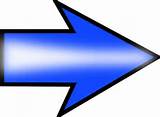Nevertheless,
it came as no surprise that, in his Introduction to the
new CUP edition of Kangaroo, Dr Steele repeated
his denial that Kangaroo could have been based
on the existence in Sydney of a real secret army, and
Lawrence's contact with it.
Steele
bestowed praise on Joe Davis, whose account of Lawrence's
time in Sydney and Thirroul had also rejected the Darroch
Thesis.
Steele cleaved to Davis's contention that the novel's
secret-army plot, such as it was, could have derived from
casual conversations Lawrence may have picked up during
his stay, possibly in Thirroul (where most of his time
was spent).
In his DH Lawrence at Thirroul, Davis had written:
| "...the
realistic Australian political details and 'feel'
of Kangaroo are just as likely to be the fruit of
Lawrence's ability to swot up on some back and current
issues of the local press, have a few incidental conversations
with local acquaintances, and come up with a portrait
of the Australian political scene ..." |
Dr Steele went along with this:
| Rawson's
suggestion [put forward in his 1968 Dissent article]
was...adopted and extensively pursued by Robert Darroch
who alleged that Lawrence was actually approached
by a secret political movement on his arrival in Sydney,
that he several times met with its supposed leader,
Rosenthal, and his associate in the King and Empire
Alliance, Colonel W.J.R. Scott, and that much of the
Somers-Callcott material is reportage. This theory
gained some credence, [but] it has now been shown
to be without foundation. |
Steele
did little to back up his assertion that the Darroch theory
had "now been shown to be without foundation",
except to cite Joe Davis (Steele accorded Davis a cue-title
in the CUP edition), and then to put forward his own alternative
explanation of how Lawrence arrived at his secret-army
plot, which in turn largely consisted of Lawrence bringing
with him to Australia some combination of Mussolini's
Blackshirts and Walt Whitman's League of Comrades.
Yet he added:
| But
concentration of this kind of 'fact' in Kangaroo
has too often overlooked the nature of Lawrence's
fiction and the raison d'etre of his characters. Somers's
involvement with the leaders of the Diggers and Socialists
had its roots in Lawrence's intellectual and imaginative
grappling with the claims of the right and the left
in politics and the problem of the writer as activist
- a problem that had preoccupied him at least since
1915 |
(Hence the standard categorisation of Aaron's Rod,
Kangaroo and The Plumed Serpent as Lawrence's
three "leadership" novels..."the writer
as activist".)
Dr Steele specifically denied that Kangaroo's Benjamin
Cooley resembled Charles Rosenthal, either physically
or otherwise (though he did concede that Rosenthal's King
and Empire Alliance had been involved in left-right political
clashes in 1920-22).
He went on:
| If
Lawrence used an individual Australian as model for
Kangaroo in his role of highly-regarded military
leader, it is most likely to have been General Sir
John Monash (1865-1931)...He had received immense
publicity in London in the months following the Armistice,
and, as a reader of newspapers, Lawrence could have
well known of him even before he left England. |
While
various scholars round the world were in the process of
editing other Lawrence works, and establishing their "authorised"
texts, the Cambridge University Press was also preparing
a new, three-volume definitive biography of Lawrence.
Its final part, The Dying Game 1922-1930 [CUP,
Cambridge 1998], was written by English Lawrence scholar
Dr David Ellis and published four years after Steele's
edition of Kangaroo.
Ellis in turn also cleaved, resolutely, to Steele's account
of Lawrence's Australian sojourn and his analysis of
Kangaroo. Yet he too conceded that the novel's political
plot might have had some local input:
| In
the seventeen years since Darroch first published
his book more and more evidence has continued to emerge
of para-military groupings associated with right-wing
organisations such as the 'King and Empire Alliance' |
but
he added:
| yet in
all that time there has been a singular lack of support
for his main thesis. |
Ellis's explanation of how such "groupings"
might have impinged on Lawrence and Kangaroo largely
followed Dr Davis's and Dr Steele's alternative theorising.
Ellis wrote:
| Lawrence
may have picked up from casual conversation in Thirroul
and elsewhere information about secret movements...but
no convincing evidence has been found to suggest that,
while he was in New South Wales, he became even remotely
intimate with the leaders of a group of that kind. |
I
bear no animosity to Ellis, Steele or anyone else in the
Lawrence world, which has since almost universally followed
Dr Steele's, Dr Davis's and Dr Ellis's views on how Kangaroo
came to be written.
Many of the points Steele made in his Introduction and
scholarly footnotes were well taken, and he picked up
several mistakes I had made in my 1981 book.
Creditably, he himself made some effort to undertake some
local research into Lawrence's time in Australia. For
example, he came up to Sydney and personally visited 112
Wycombe Road, where he picked up the fact that I had -
as had Lawrence - confused the South Head lighthouse with
the Macquarie light.
I knew, of course, he was wrong - egregiously wrong -
about where Lawrence had got the plot of Kangaroo.
But he was justified in pointing out that the Darroch
Thesis was still, at that time, mainly speculation (though,
I feel constrained to point out, particularly well-grounded
speculation).
However, given Dr Steele's "rubbishing" of the
Darroch Thesis, I can I hope be excused from deriving
a tincture of satisfaction (if that is the right word)
from an error Steele himself made in his "authorised"
CUP edition of Kangaroo.
For in that text he got the ending of the novel wrong.
